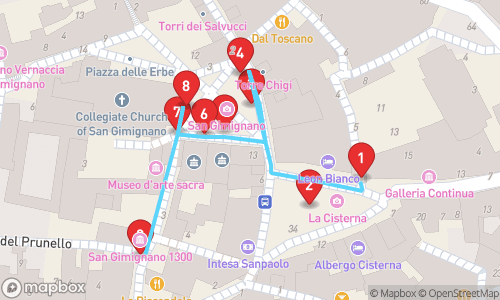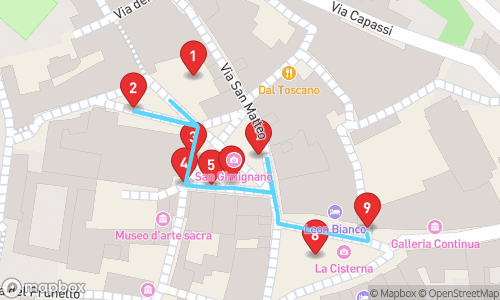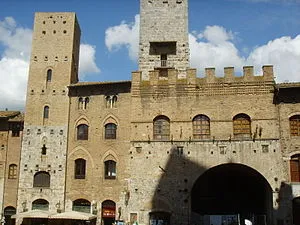
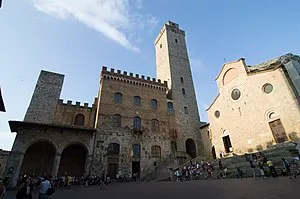
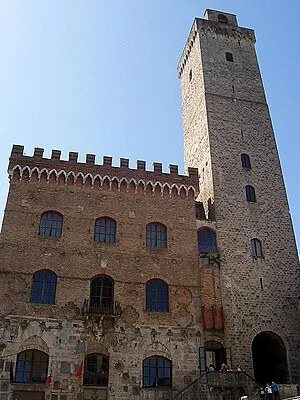
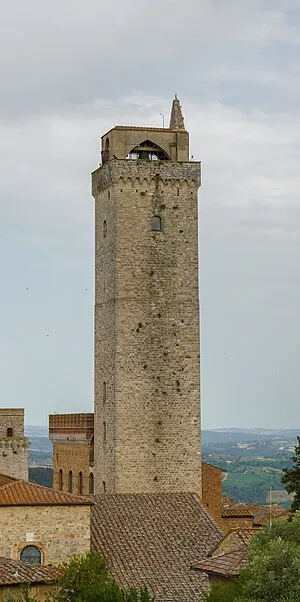
San Gimignano: Discovering The Town Of Fine Towers

Tour Guide
Jenny Multilingual
Welcome to San Gimignano! On this GPS guided audio tour, we will visit 25 stops on a route of 2.25km. This tour focusses mainly on general tourism.
Locatello is an app where you can generate personal audio guided tours. Set your preferred distance, guide, language and theme, and a guided tour is created on the spot.
Walking Time
Distance
stops
Language
Tour Stops

Palazzo del Podestà
A palace built in the 12th century, the Palazzo del Podestà was rebuilt in 1239 and expanded in 1337. It features a mix of stone and brick façade, arches, and a Gothic-style roof with a decorative pattern of diagonal tiles.

piazza del Duomo
A historic city square, Piazza del Duomo is surrounded by iconic buildings including Palazzo Vecchio del Podestà, Torre Rognosa, Torre Chigi, and Torri dei Salvucci, showcasing San Gimignano's medieval architecture.
Audio Preview
30 sec
Palazzo Comunale
Palazzo Comunale: A historic palace serving as a museum and the seat of the government of San Gimignano, featuring a crenellated crown and frescoed coats of arms, with artwork by renowned artists of the Florentine and Sienese schools.

Torre Grossa
A medieval tower house in San Gimignano, Torre Grossa stands as the tallest among its peers, measuring 54 metres (177 ft) high. Constructed in 1310, it is one of Tuscany's most iconic and well-known medieval towers.
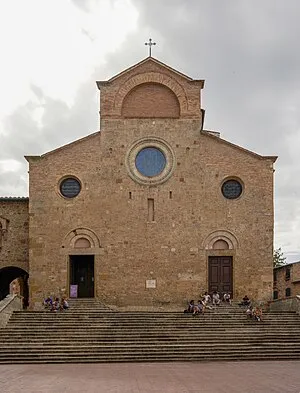
Collegiate Church of San Gimignano
The Collegiate Church of San Gimignano is a Roman Catholic collegiate church and minor basilica featuring a 12th and 13th century Romanesque architecture with Renaissance-style chapels.
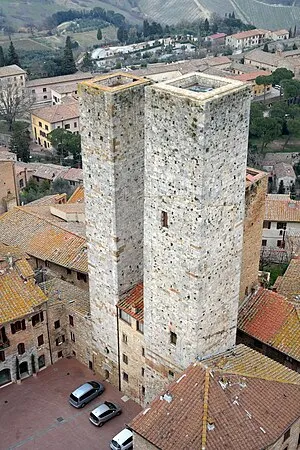
Torri dei Salvucci
A Tuscan tower house, the Torri dei Salvucci is a historic complex that symbolizes the supremacy of the Salvucci family, built to rival the adjacent Ardinghelli tower. The twin towers feature narrow portals and few windows, with the larger one housing an original, multi-level residence available for short-term rental.
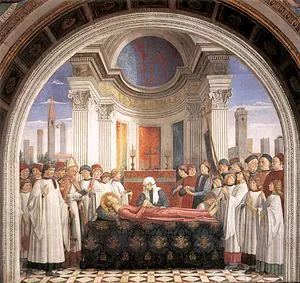
Santa Fina Chapel
A chapel dedicated to Santa Fina, built between 1457 and 1488, featuring a beautiful architecture inspired by Antonio Rossellino and frescoes by Domenico Ghirlandaio.
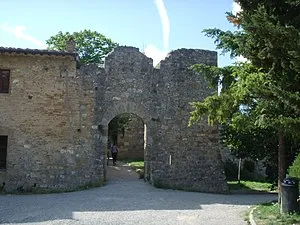
Rocca di Montestaffoli
A medieval castle built in the 14th century, initially owned by the Bishop of Volterra, and later restored in the 20th century after falling into disrepair.

chiesa del Quercecchio
A museum showcasing 371 avifauna specimens, including rare and extinct species, to provide a comprehensive view of Italian and European bird evolution. The collection, founded in the early 20th century, features taxidermied specimens prepared by renowned experts.

Historic Centre of San Gimignano
A medieval walled town, the Historic Centre of San Gimignano is a well-preserved old town with numerous medieval towers and a rich cultural heritage, inscribed on the UNESCO World Heritage List since 1990.

SanGimignano1300
A museum showcasing the art and history of San Gimignano, with 10 galleries featuring reproductions of the city's 14th-century life, paintings, and installations, including a large-scale model of the city.
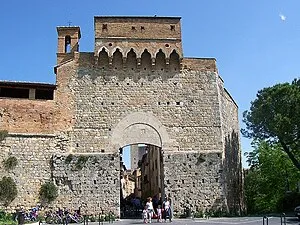
Porta San Giovanni
A city gate, completed in 1262, characterized by an arched entrance and an overhanging guard tower with ornated decorations, making it the most majestic among San Gimignano's gates.
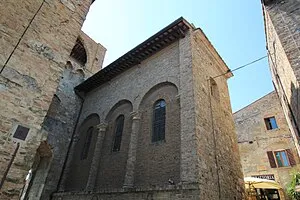
Madonna dei Lumi
A Baroque church built in 1601 by Francesco Panzini, featuring stucco and monochromatic paintings by Pietro Scaliano in 1794. The church was partially demolished in 1922 to clear traffic around Porta San Giovanni.
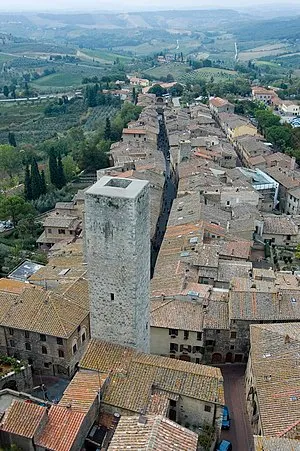
Torre dei Cugnanesi
A Tuscan tower house dating back to the 13th century, one of San Gimignano's remaining 14 towers, with a robust presence amidst the Arco dei Becci's defensive setup.
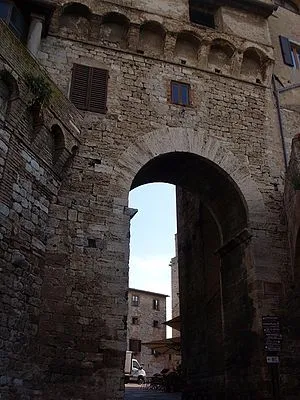
Arco dei Becci
A city gate in San Gimignano, the Arco dei Becci is an ancient archway with visible stone, topped by a projecting covered balcony supported by arches. It connects Piazza della Cisterna to Via San Giovanni.

Torre dei Becci
A Tuscan tower house called Torre dei Becci, dating back to the 13th century, features a simple design with a quadrangular base, regularly joined blocks, and narrow slits for windows.
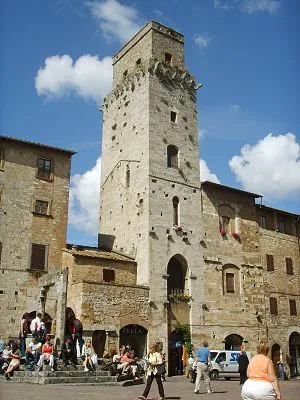
Torre del Diavolo
A Gothic-style tower made of white calcerous rock, featuring brackets at the top, and part of the Palazzo Cortesi complex in San Gimignano. It's home to the Torture Instruments Museum, presenting historical and scientific information on torture methods.
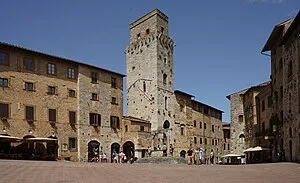
piazza della Cisterna
A piazza with a triangular shape, slightly sloping natural terrain, surrounded by medieval towers and houses, featuring an underground cisterna from 1287 with a travertine octagonal pedestal from 1346.
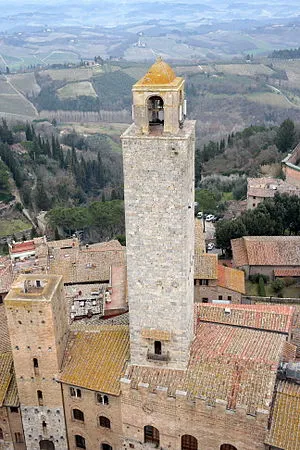
Torre Rognosa
A 51-metre-tall, 13th-century tower, Torre Rognosa is one of the best-preserved and second-largest in San Gimignano, built for the Gregori and Oti families.
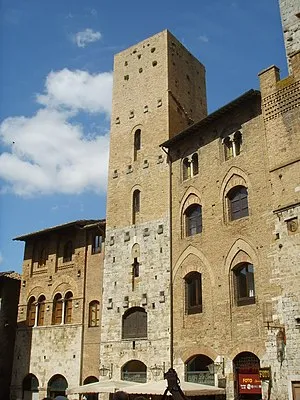
Torre Chigi
A Tuscan tower house with a stone façade and a unique design, featuring a flat roof and arched windows, showcasing a blend of medieval architectural styles.
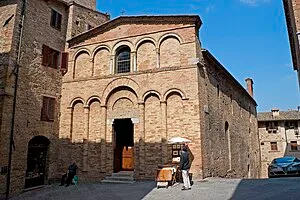
San Bartolo in San Gimignano
A church building, San Bartolo, features a simple construction with a single nave, covering of capriates, and no apse. The stone and brick masonry displays various styles and eras, including a 12th-century stone paramento.
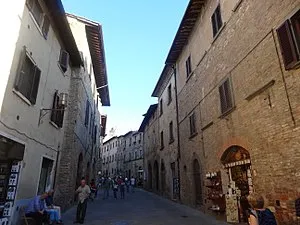
Via San Matteo in San Gimignano
A historic street in San Gimignano's old town, Via San Matteo is known for its medieval architecture and proximity to the ancient Via Francigena.

Sant'Agostino
A 13th-century church, the second largest in San Gimignano, owned by the Order of Saint Augustine. The interior features a large hall with a famous fresco cycle on the life of Saint Augustine, as well as other artworks and a chapel with a magnificent altar.
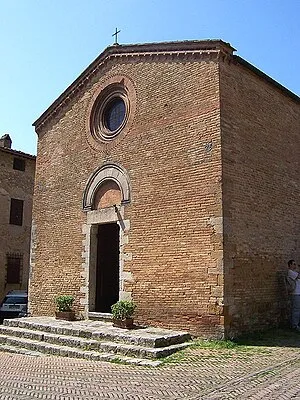
San Pietro
A church building, the Chiesa di San Pietro in Forliano is an intimate, single-aisled church with interesting frescoes from the 14th century in its interior.

Chiesa di San Jacopo al Tempio
A commandry of the Templar Order, the Chiesa di San Jacopo al Tempio features a facade with an arched portal, a rosette, and ceramic basins from the 12th-13th centuries. Its exterior walls are composed of travertine and brick, with intricate stone carvings and decorations.
Download App
Experience this tour and many more with our mobile app. Available for iOS and Android.
Audio Preview
Tour Map
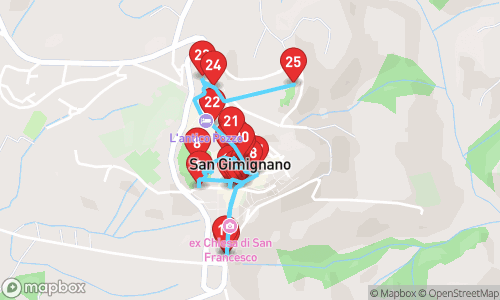
Quick Facts
- ✓GPS-guided navigation
- ✓Professional audio narration
- ✓Offline maps available
- ✓Premium content included
Why Choose This Tour
Expert Local Guide
Narrated by Jenny Multilingual, specializing in general tourism
Flexible Timing
Take the tour at your own pace, any time of day
